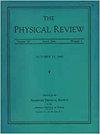Effects of polydispersity on the plastic behaviors of dense two-dimensional granular systems under shear
引用次数: 0
Abstract
We study particle-scale motion in sheared highly polydisperse amorphous materials, in which the largest particles are as much as ten times the size of the smallest. We find strikingly different behavior from the more commonly studied amorphous systems with low polydispersity. In particular, an analysis of the nonaffine motion of particles reveals qualitative differences between large and small particles: The smaller particles have dramatically more nonaffine motion, which is induced by the presence of the large particles. We characterize how the nonaffine motion changes from the low- to high-polydispersity regimes. We further demonstrate a quantitative way to distinguish between ``large'' and ``small'' particles in systems with broad distributions of particle sizes. A macroscopic consequence of the nonaffine motion is a decrease in the energy dissipation rate for highly polydisperse samples, which is due both to a geometric consequence of the changing jamming conditions for higher polydispersity and to the changing character of nonaffine motion.多分散性对致密二维颗粒体系剪切塑性行为的影响
我们研究了剪切高度多分散的非晶态材料中的颗粒尺度运动,其中最大的颗粒大小是最小的十倍。我们发现与通常研究的具有低多分散性的无定形体系的行为明显不同。特别是,对颗粒的非仿射运动的分析揭示了大颗粒和小颗粒之间的定性差异:小颗粒具有明显更多的非仿射运动,这是由大颗粒的存在引起的。我们描述了非仿射运动如何从低到高的多分散状态变化。我们进一步展示了一种定量方法来区分具有广泛粒径分布的系统中的“大”和“小”颗粒。非仿射运动的宏观结果是高多分散样品的能量耗散率降低,这是由于高多分散时干扰条件变化的几何结果和非仿射运动特性的变化。
本文章由计算机程序翻译,如有差异,请以英文原文为准。
求助全文
约1分钟内获得全文
求助全文

 求助内容:
求助内容: 应助结果提醒方式:
应助结果提醒方式:


